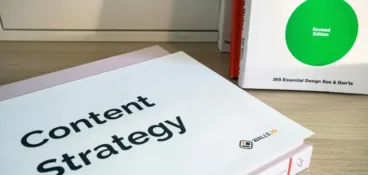If you feel like you’re constantly chasing your tail to keep up with the demand for quality content, there’s a good chance you’re working with a wonky content supply chain.
So in this article, we’re going to cut through the jargon to get a clearer idea of what a content supply chain actually is and why your business needs one.
After that, I’ll help you whip your content supply chain into shape by outlining the best way to tackle each stage. We’ll also look at some top tools to make life easier for your teams.
Sounds good? Then let’s go!
What is a content supply chain?
A content supply chain is an overarching term used to describe your entire content lifecycle and all the various stages and processes involved.
It covers every step from content planning through to the final delivery of your assets. Meaning you’ve got multiple tasks and teams that need to work together to produce high-quality content on time. And just one glitch has the potential to mess up the whole show.
What makes a content supply chain important? Here are just a few reasons:
- More productivity — A solid content supply chain helps teams stay organized and deliver content on time, every time. By having a clear roadmap and defined processes, you’ll be able to steep clear of miscommunication, delays, and costly content bottlenecks.
- Content consistency — A content supply chain uses standardized procedures for everything from visual content creation to content review and approval. This will help your business stay on top of brand compliance and make sure all content is on-brand.
- Better collaboration between teams — Collaboration is key for creating top-class, timely content. And a content supply chain makes it easier for teams to work together towards common goals by defining roles and keeping everyone on the same page.
Approve all your content in one place
Get quick and clear feedback right on top of your content with Filestage.
How to build a content supply chain in four steps
No matter if you’re creating blog articles for SEO or a multi-channel marketing campaign, you need a solid content supply chain to get the results you want.
Here are the key stages involved in an effective content supply chain:
- Content planning — research and planning are the foundation of your entire content supply chain
- Concept creation — this stage involves coming up with the core ideas for your content
- Content production — this is where you turn your ideas into stunning content your audience will love
- Content distribution — publishing and promoting your content to reach the right audience at the right time
Let’s take a closer look at how to successfully approach each stage of your content supply chain.
1. Start by planning your content
Almost every cracking piece of content you see is the result of a carefully considered content plan. Which is why it’s crucial to get this first stage of your content supply chain right.
A well-thought-out content strategy should outline the types of content you’ll create, the topics you’ll cover, and the channels you’ll use to distribute it. In other words, it gives your content supply chain a clear direction from the start.
Here’s how to effectively plan out your content.
Understand your target audience
Knowing your audience is key to delivering content that resonates with them. Who are they? What are their interests, pain points, and needs? Painting a clear picture of who you’re talking to will help you tailor your content to their preferences.
Define clear objectives
What do you want to achieve with your content? Setting clear goals now will also guide you in writing a cracking creative brief and choosing the best channels to use. For example, if your aim is to increase brand awareness, you might focus on thought leadership and educational pieces.
Create an editorial calendar
With a content calendar, you’ll be able to build a solid content workflow from day dot. Ideally, you should aim to brainstorm ideas and topics for your content calendar a month in advance to ensure a steady flow of material and fewer last-minute scrambles.
Since consistency is key to digital content creation, mapping out your calendar is a must.
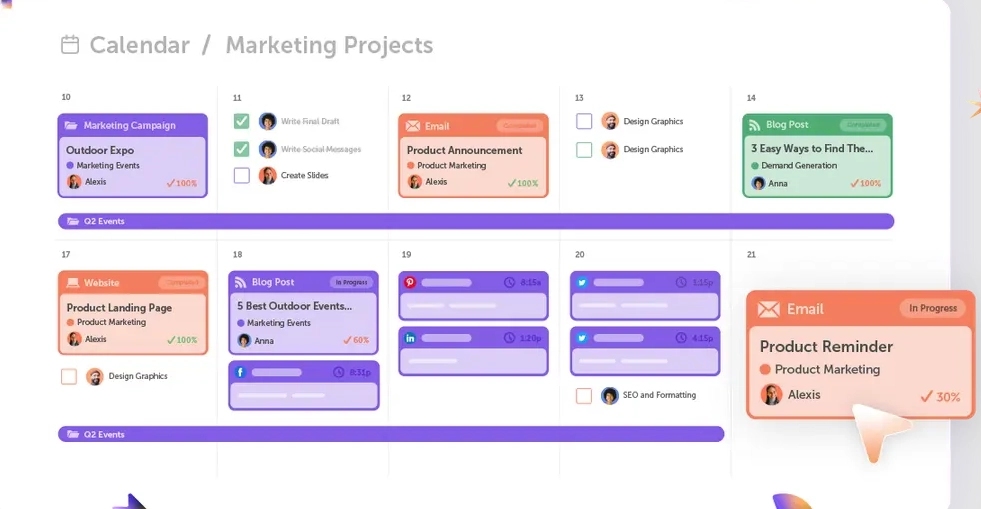
2. Create some scroll-stopping ideas
Now that you’ve wrapped up the content planning stage, it’s time to really get those creative juices flowing. Your creative concepts are the meat and potatoes of your creative review process. You need to come up with ideas that catch attention and speak to your specific target audience and pique their attention.
This stage will look a little different depending on the type of content you create. For example, social media content will require a different kind of conceptual thinking than an email campaign.
Here are some general tips to help you get the most out of your content ideas
Tap into emotion
Content that stirs up emotion performs better as it’s more likely to be shared and remembered by your audience. So think about how you can make your audience feel something – whether it’s joy, surprise, empathy, or inspiration. These brand strategy examples will give your some ideas on how to move your audience.
Use trending topics
If you want to create timely content that increases engagement, trending topics are your best friend. Keep an eye on current events, viral trends, and industry news and use them to inspire your own ideas. This will do wonders for your content shareability!
Create a collaborative environment
The best ideas are often a mashup of two or more different thoughts to create something new. Which is why working collaboratively is super important if you want to generate a diverse range of ideas. Host regular brainstorms, create a safe space to share ideas, and use content marketing tools to bring your team’s heads together.
Strapped for ideas? Our Visual Content Marketing guide will help.
3. Set up a content production process
You’ve come up with some cracking content ideas that your team loves. Now it’s time to bring them to life.
This stage of your digital content supply chain involves working with a team of designers, copywriters, and content creators to produce high-quality content. So you need to have super tight processes in place to keep your creative teams on track.
Here’s how you can build an effective content production process.
Develop a content brief
Before you start producing, you need to lay out clear instructions and expectations for each piece of creative with a detailed content brief. You can use a standard template that includes the content’s purpose, audience, key messages, tone, and format. Then, review the creative brief with your content team to clarify any questions before starting production.
Create a production timeline
A successful content supply chain needs a timeline outlining the production process from start to finish. Include deadlines for each stage, such as drafting, editing, design, and final approval. Most importantly, make sure everyone is aware of their responsibilities and the due dates they need to meet.
Set up a review and approval workflow
When creating any kind of content, you’ll need to make time to review and approve each piece of work before it goes out into the world. The best way to do this is by setting up multiple review stages and assigning the right people to share feedback. And the best way to do that is with the help of a cutting-edge content review tool like Filestage (we’ll take a closer look in just a sec).

4. Distribute your content
Alrighty, it’s almost time to let your content work its magic. This stage of your content supply chain is all about making sure your content reaches the right people at the right time.
Ideally, you should already know what channels you’re going to share your content on, as well as when you want to distribute it (nudge nudge, it’s all in your content calendar). Now, you just need to focus on optimizing your content (think hashtags, supporting copy, SEO keywords) and sticking to a posting schedule.
The easiest and most effective way to schedule your content is with the help of a content distribution tool. And there are plenty of options out there to help you publish across multiple channels. Which brings us onto the last section of this article.
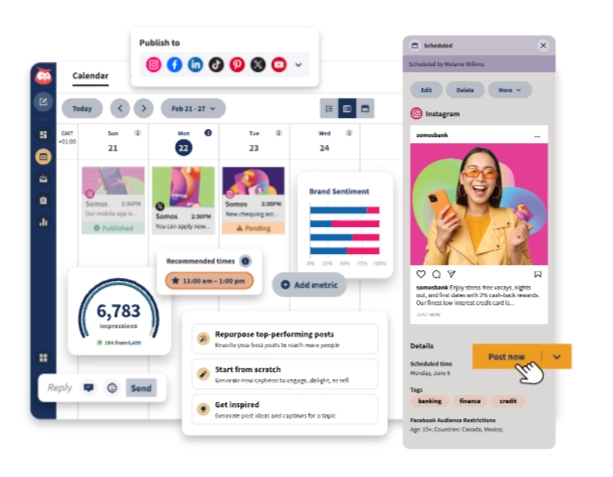
Three best tools to streamline your content supply chain
Keeping the chaos out of your content supply chains is easier said than done, especially when you’ve got umpteen different projects and tight deadlines to meet. But there are a bunch of great content marketing tools out there to streamline your processes and make life easier.
Let’s check out three top tools to level-up your content supply chain.
1. Filestage – top tool for reviewing content
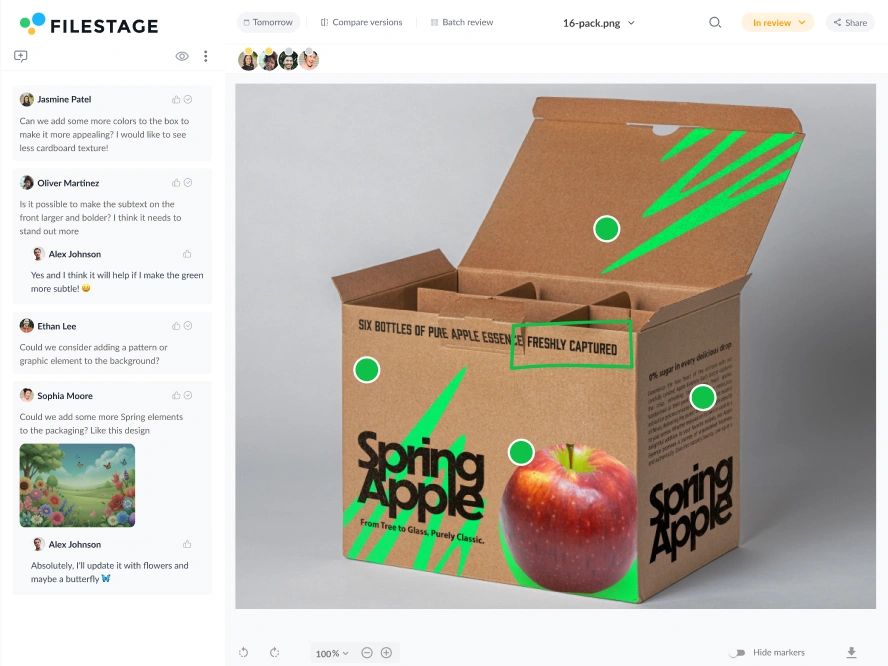
Filestage helps you create and manage your content approval workflow like a pro by keeping all your reviews and feedback in one, user-friendly place. So you can ditch those endless email chains for good.
You can use Filestage to review all the popular content formats including documents, photos, videos, audio files, social media assets. That means no matter the project, you’ll be able to rest assured that all your content feedback is organized and easily accessible.
Here’s how it works:
- Sign up to Filestage for free and create a project
- Set up reviewer groups and invite reviewers
- Upload your content files and set due dates
- Collect feedback from reviewers
- Collaborate until you get approval
2. Hootsuite – top tool for content scheduling
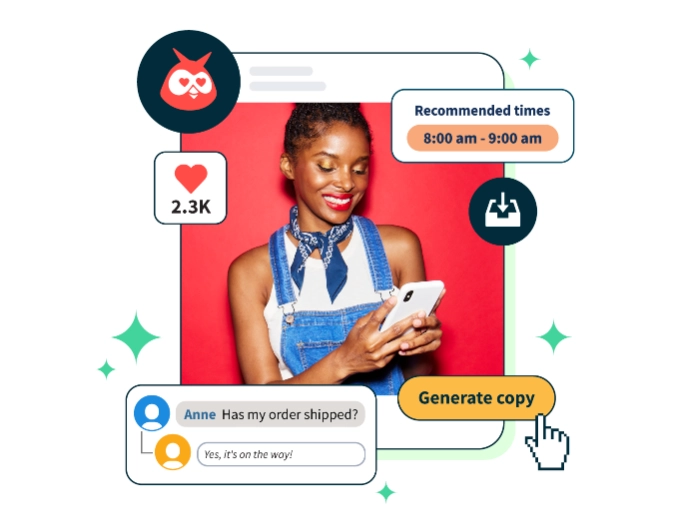
Hootsuite is a content scheduling and planning tool for social media workflows. It’s kitted out with an intuitive interface that makes it super easy to manage your social media calendar and automate time-intensive scheduling tasks.
It also boasts some handy analytics features, so you can track your content performance for better results over time.
3. Surfer SEO — top tool for SEO optimization

After creating some stunning content, you’ll want to give it the best chance of getting seen by your audience, right?
Surfer SEO is one of the top AI content creation tools there is. It uses AI to analyze SERPs (search engine results pages), then automatically presents you with clear guidelines to help you create top ranking content. You can use it to plan, outline, and write your content in advance, or you can simply paste your content into the platform once it’s written and add in your keywords then.
Final thoughts
To deliver quality content at scale, you need a strong content supply chain filled with fast processes and smooth collaboration.
Hopefully this article gives you the tools you need to take your content supply chain to the next level. And if you’d like to see how Filestage can streamline the way you review and approve all your content, start your free trial today.







